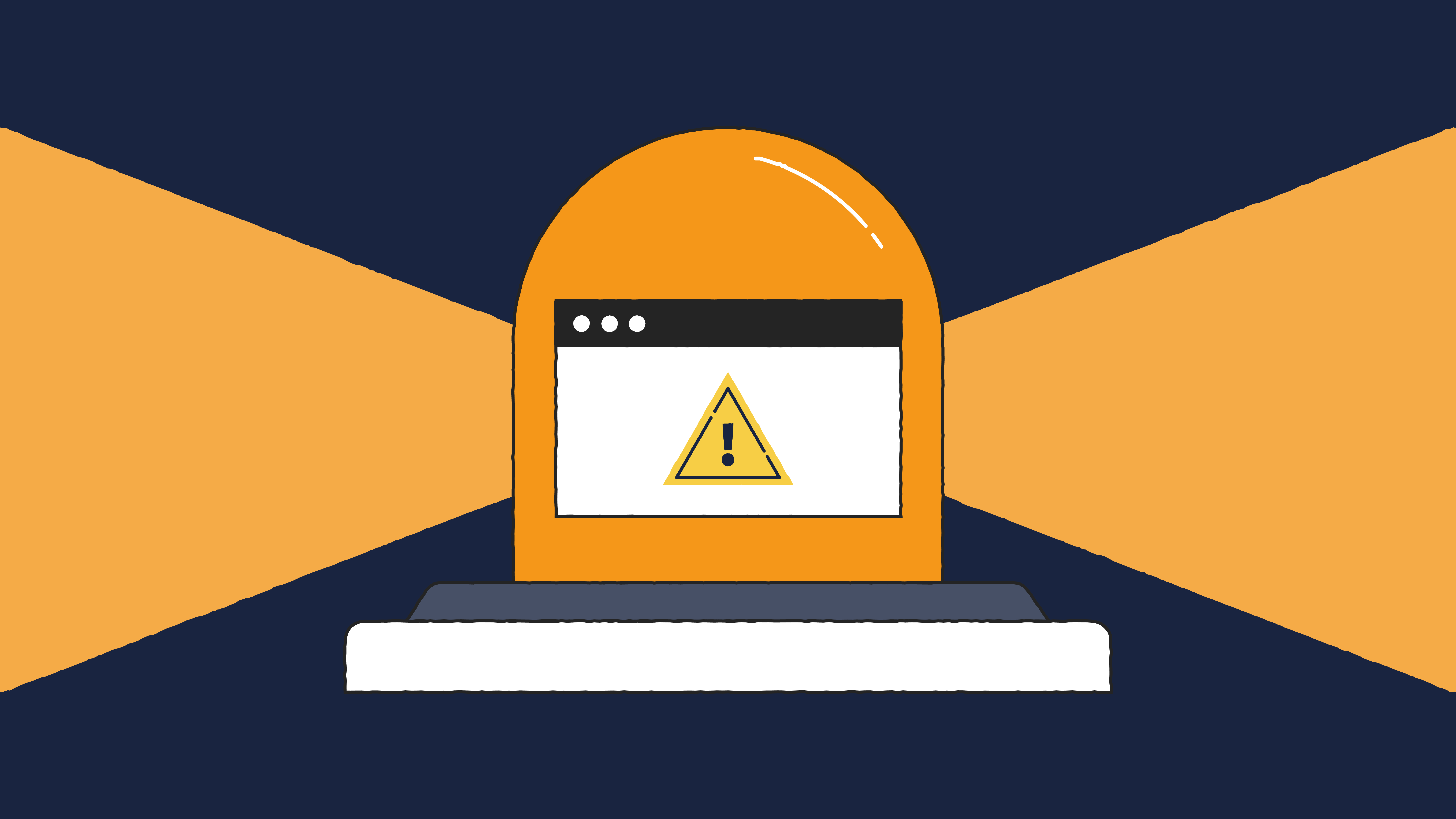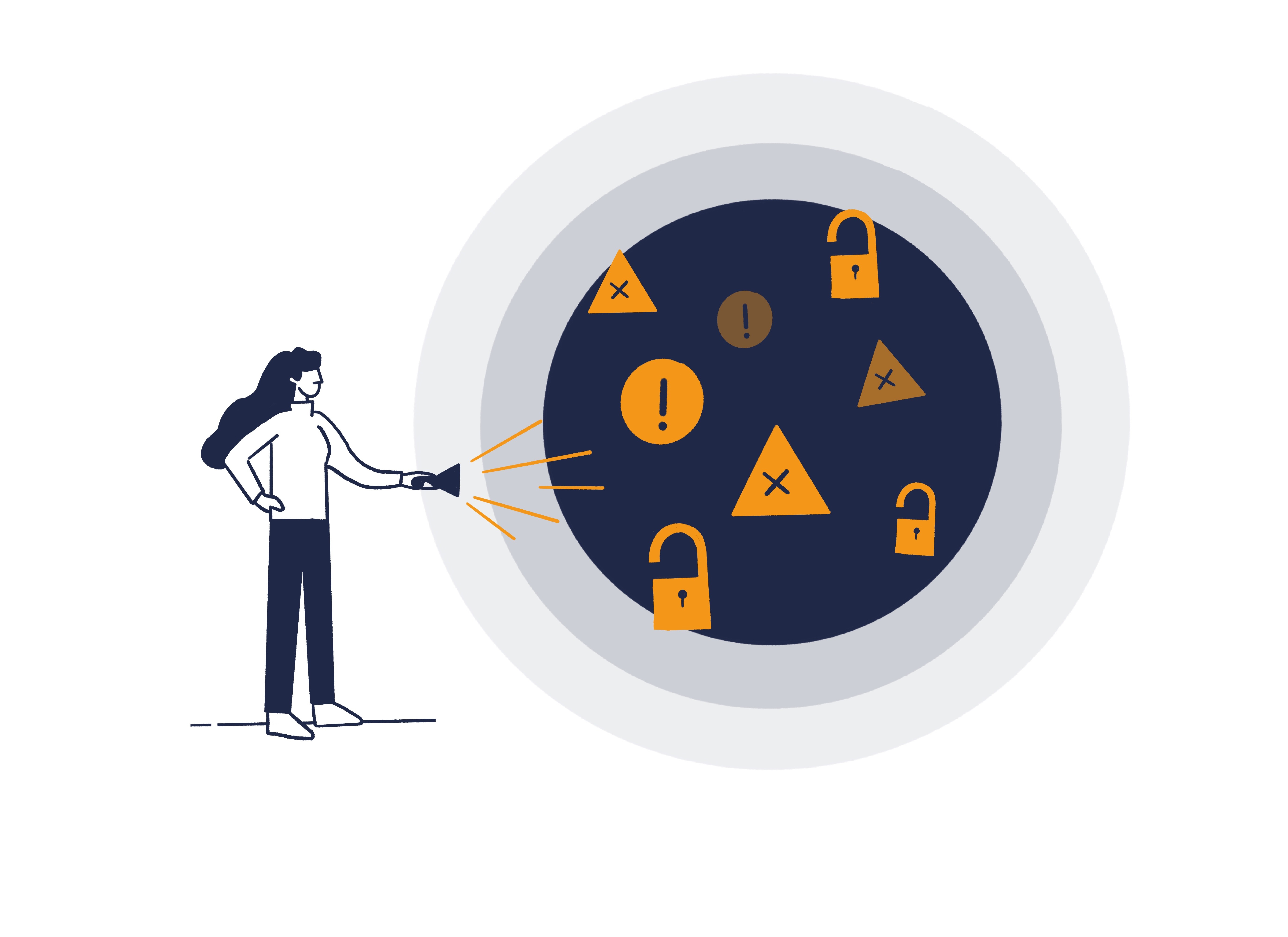An endpoint detection and response solution is designed to monitor and act on advanced threats and cyber attacks that traditional software cannot detect. Which one is best for you? In what follows, we offer a breakdown of critical capabilities, considerations to make, and the top benefits of EDR solutions.
Evaluating endpoint detection and response solutions
EDR solutions are considered an evolution of traditional cybersecurity products. While simple offerings such as antivirus software focus on detecting and removing known threats such as malware, EDR solutions provide a more holistic and proactive approach to endpoint security.
Specifically, EDR solutions leverage continuous collection of endpoint data to enable real-time threat detection, incident investigation, and forensic analysis. In most cases, best-of-breed EDR products offer a combination of the following capabilities:
- Real-time 24/7 monitoring. EDR (endpoint detection) systems continuously monitor endpoints for suspicious activities, providing real-time visibility.
- Advanced threat detection. Unlike conventional antivirus tools, EDR solutions can detect and respond to sophisticated attacks, including zero-day threats and file-less malware.
- Incident response. With real-time visibility across all endpoints, security teams can detect suspicious activity early and initiate response protocols to contain threats before they escalate.
- Incident investigation with root cause analysis (RCA). EDR technology enables detailed forensic analysis of security incidents.
- Behavioural analysis. By analysing behavioural patterns, EDR solutions can identify potential threats based on unusual activities rather than relying solely on signature-based detection methods.
- Automated remediation capabilities. Here you isolate and neutralise compromised endpoints upon threat detection. Automation reduces the burden on security teams, allowing them to focus on critical tasks that demand human expertise.
- Threat hunting. EDR goes beyond basic detection, enabling security teams to actively uncover hidden threats. Advanced threat intelligence enables companies to take a proactive approach, identifying vulnerabilities before attackers can exploit them.
- Management and reporting capability. Many EDR platforms offer a centralised customer portal with a consolidated dashboard overview of all endpoints. Transparent and easily digestible reporting enhance response times and give leadership teams visibility into the organisation’s security landscape.
- Vendor support. Assess the vendor’s support reputation, focusing on response times and SLAs for critical issues. Prioritise vendors with strong cybersecurity research and expertise, as they are more likely to deliver timely threat intelligence and updates.
- Easy deployment and onboarding. Select an EDR solution that seamlessly integrates with your existing infrastructure and tools, including SIEM (Security Information and Event Management) and SOAR (Security Orchestration, Automation, and Response) platforms.
Top 5 critical capabilities and key considerations for selection
Selecting the best EDR security solution requires thorough evaluation to ensure efficacy. Here is a breakdown of the key capabilities:- Threat detection capabilities. The solution should provide comprehensive threat detection capabilities that identify a wide range of malicious activities. Referencing the MITRE ATT&CK framework can help evaluate the effectiveness of an EDR solution in detecting various attack techniques. The EDR solution should be capable of identifying both known and unknown threats, ensuring comprehensive protection against a wide range of potential security risks.
- Threat response and blocking. The solution should enable rapid response actions to mitigate threats before they cause significant damage.
- Visibility and reporting. High visibility and detailed reporting capabilities are vital for monitoring endpoint activities and identifying suspicious patterns. The EDR system should provide real-time insights into events like suspected malware or unauthorised access attempts, ideally in an easily digestible format such as a self-service customer dashboard.
- Security and compliance with industry standards. The selected EDR solution should help organisations comply with relevant cybersecurity and data protection regulations.
- Integrations and scalability. The solution must integrate seamlessly with the existing IT infrastructure and be scalable to accommodate the organisation’s growth. Ensuring easy integration reduces the complexity of managing multiple security tools. EDR solutions scale with the organisation, securing everything from desktops and laptops to cloud environments. This adaptability is essential as businesses expand their digital footprint and with this, their attack surfaces.
The top 5 benefits of EDR technology
Endpoint Detection and Response (EDR) products offer significant advantages to organisations seeking to enhance their security posture. The primary benefits revolve around real-time visibility and incident investigation capabilities.
Instant awareness: seeing threats as they unfold
Imagine having a security camera that never blinks. That’s what EDR brings to endpoints: continuous, real-time visibility. It tracks every action on every device, instantly flagging suspicious behavior. This continuous monitoring is key to identifying sophisticated threats that can bypass classic security measures.
Why it matters:
• Spots threats the moment they emerge.
• Understands the full scope of an attack in real time.
• Reduces detection time from weeks to minutes.
Fast-track investigations: from clues to clear answers
Cyberattacks are like crime scenes. Every detail matters. EDR gathers deep forensic data, reconstructing attack timelines so security teams can see exactly what happened, when, and how. This makes EDR an essential endpoint security solution for companies looking to enhance their investigative capabilities.
Why it matters:
• Rapid root-cause analysis to stop threats at the source.
• Deep forensic insights to prevent repeat attacks.
• Automated playbooks that cut response time dramatically.
Smart automation: let the system do the heavy lifting
Time is everything in cybersecurity. The faster companies act, the less damage an attack can do. EDR automates threat containment, isolating infected devices, killing malicious processes, and blocking suspicious activity before it spreads.
Why it matters:
• Immediate containment of high-risk threats.
• Less manual work for security teams.
• Faster recovery and reduced downtime.
Threat hunting on your terms
EDR flips the script on cyber defence. Instead of waiting for alerts, security teams proactively hunt for hidden threats in the system. Many EDR solutions also offer managed threat hunting services, providing continuous monitoring and expert analysis to identify and mitigate threats before they escalate.
Why it matters:
• Identifies threats before they trigger an alert.
• Uses AI-driven analytics to uncover sophisticated attacks.
• Strengthens defences with every investigation.
Security that grows with you
From remote employees to cloud servers, endpoints are everywhere. EDR evolves with organisations, protecting every endpoint, no matter how complex IT environments become.
What this means for you:
• A single pane of glass for all endpoint security.
• Seamless integration with SIEM, SOAR, and cloud security tools.
• Future-proof protection for a constantly shifting threat landscape.
EDR deployment and management
EDR deployment and management are the components of a comprehensive endpoint security strategy. There are several deployment options available, including on-premises, cloud-based, and hybrid models. Each option has its advantages and disadvantages, and the choice of deployment model depends on an organisation’s specific needs and requirements.
On-premises, cloud-based, and hybrid deployment
On-premises EDR solutions are deployed and managed within an organisation’s own infrastructure. This model provides complete control over the EDR solution and is suitable for organisations with strict security and compliance requirements. However, on-premises deployment can be resource-intensive and may require significant upfront investment.
Cloud-based EDR solutions, on the other hand, are deployed and managed in the cloud. This model provides scalability, flexibility, and cost-effectiveness, making it suitable for organisations with limited resources. Cloud-based EDR solutions also provide real-time threat intelligence and automated updates, ensuring that the organisation’s security posture is always up-to-date.
Hybrid deployment models combine the benefits of on-premises and cloud-based deployment. This model allows companies to deploy EDR solutions on-premises while leveraging cloud-based services for threat intelligence, analytics, and other advanced capabilities.
Managed endpoint detection and response (mEDR)
Managed endpoint detection and response (mEDR) solutions enable a security vendor or partner to manage and deliver EDR to an organisation. mEDR solutions are offered as a managed service, which means that the security vendor or partner deploys, operates, and supports the EDR solution. mEDR solutions often include teams of cybersecurity experts who hunt down, investigate, and remediate threats.
mEDR solutions can reduce detection and response times, allowing companies to focus on the most important threats. mEDR solutions are a type of EDR solution that provides managed security services, making them suitable for companies with limited resources or expertise.
System requirements for EDR solutions
EDR solutions require specific system requirements to function effectively. These requirements include:
-
Operating system support: EDR solutions must support the company's operating systems, including Windows, macOS, and Linux.
-
Hardware requirements: EDR solutions require specific hardware configurations, including CPU, memory, and storage.
-
Network requirements: EDR solutions require network connectivity to communicate with the cloud or on-premises infrastructure.
-
Software requirements: EDR solutions require specific software configurations, including compatibility with other security solutions.
Companies must ensure that their systems meet the system requirements for EDR solutions to ensure effective deployment and management.
EDR security and compliance
EDR solutions must comply with regulatory requirements, including GDPR, HIPAA, and PCI-DSS.
EDR compliance with regulatory requirements
EDR solutions must comply with regulatory requirements to ensure that companies meet their security and compliance obligations. EDR solutions must provide features such as:
-
Data encryption: EDR solutions must encrypt data in transit and at rest to protect sensitive information.
-
Access controls: EDR solutions must provide access controls to ensure that only authorised personnel can access sensitive information.
-
Audit logs: EDR solutions must provide audit logs to track all activities, including user actions and system changes.
-
Incident response: EDR solutions must provide incident response capabilities to respond to security incidents effectively.
Companies should ensure that their EDR solutions comply with regulatory requirements to avoid fines and reputational damage.
Conclusion and next steps
Cyber threats do not wait for organisations to react. EDR ensures you are always one step ahead, seeing more, responding faster, and strengthening your security posture with every attack attempt. It not only detects threats but also redefines how organisations fight back.
With Endpoint Detection and Response (EDR) solutions, organisations are offered advanced capabilities beyond traditional software to combat evolving cyber threats. EDR systems provide real-time monitoring, advanced threat detection, incident investigation, and behavioural analysis, ensuring comprehensive protection.
EDR systems provide proactive threat detection, ensuring that organizations can identify and mitigate threats before they cause significant harm.
When selecting an EDR solution, look for EDR systems with features like proactive threat detection capabilities, threat response and blocking to mitigate threats, visibility and reporting, integration and scalability, plus maintaining security and compliance with industry standards.



